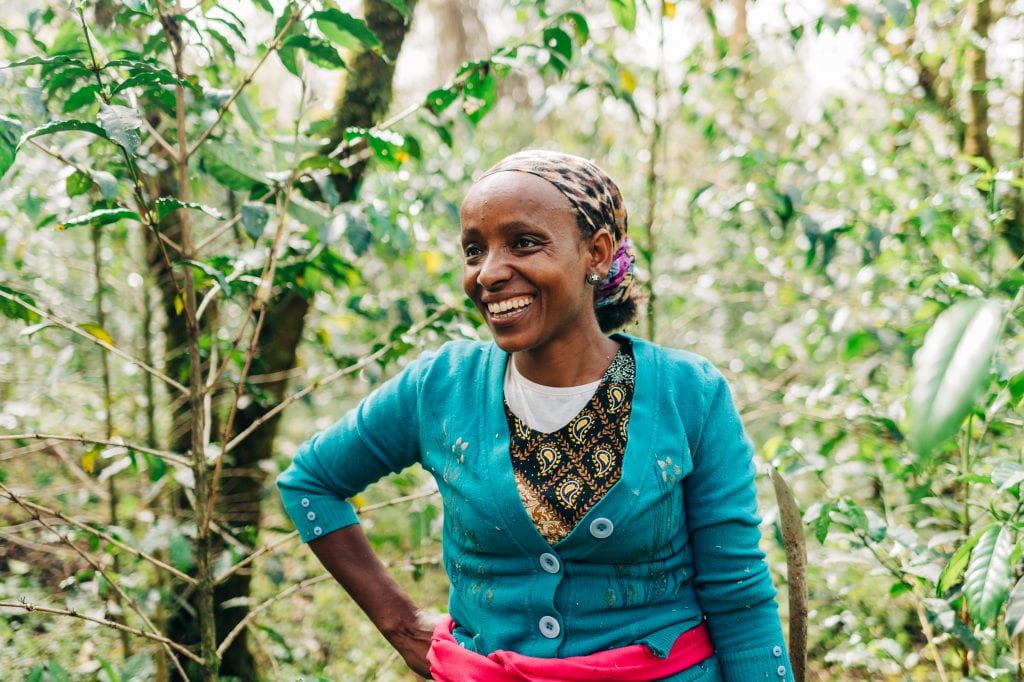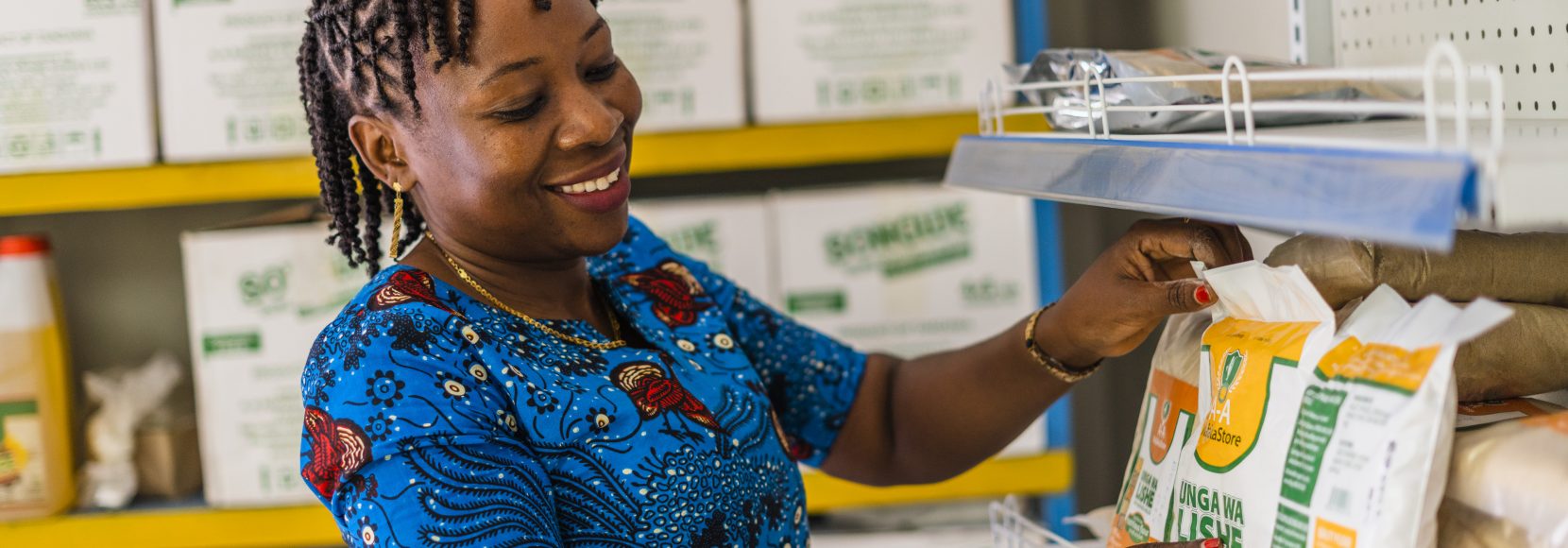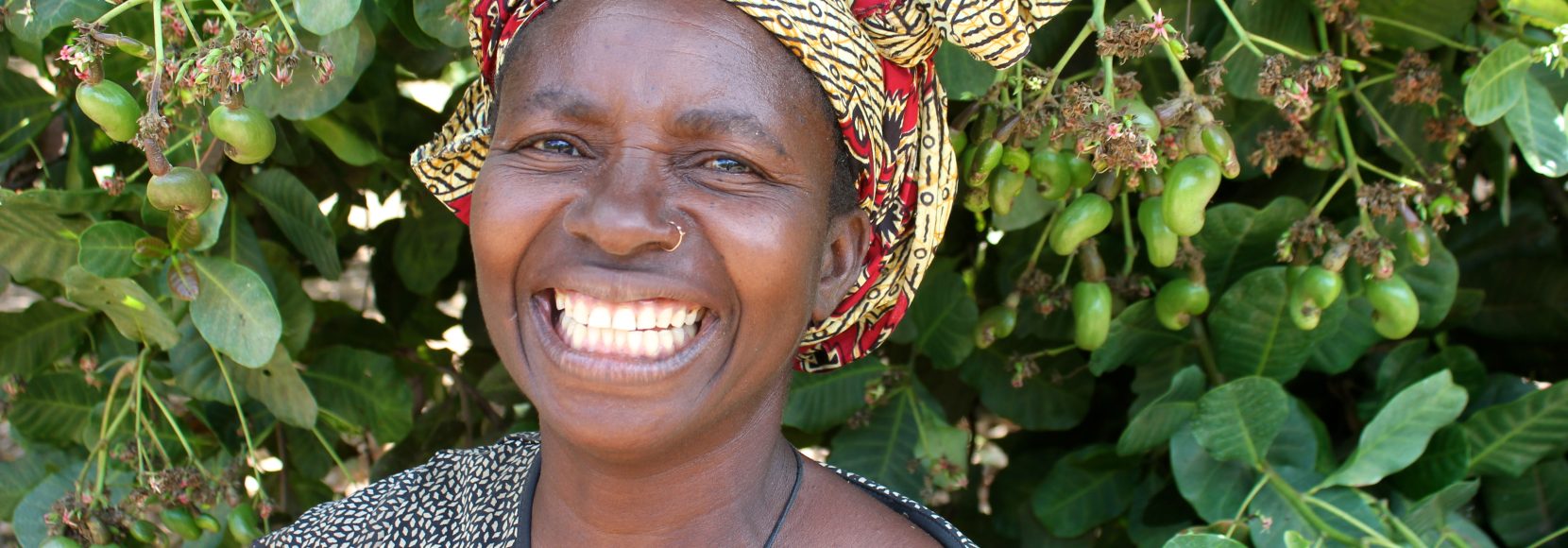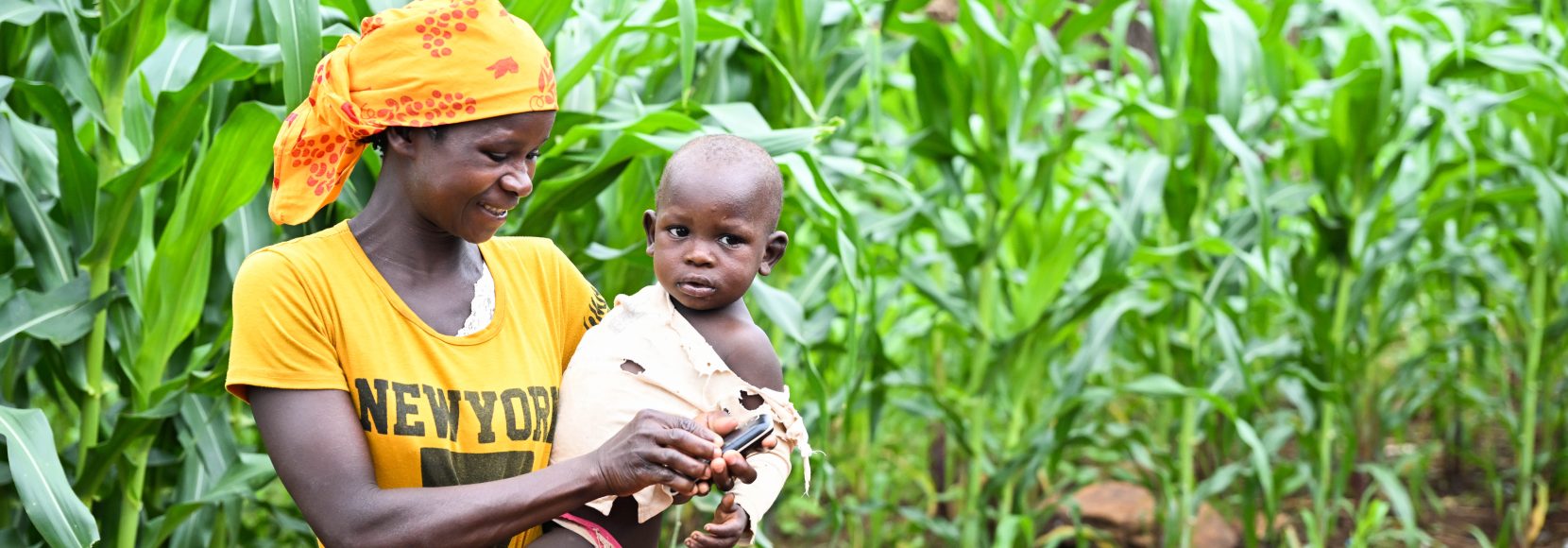
Digesting the Latest U.N. Food Security Report: Five Takeaways You Should Know
The Food and Agriculture Organization (FAO) of the United Nations recently released its 2021 “State of Food Security and Nutrition in the World” report. One of the most important global assessments of food insecurity and malnutrition, the report outlines regional findings, key statistics, and overall trends in food security. In this Q&A, TechnoServe’s Chief Transformation Officer, Kindra Halvorson, addresses the report’s key findings and how they relate to TechnoServe’s work to address global food insecurity.
U.N. Food Security Report
Five Key Takeaways From the 2021 U.N. Food Security Report
- Food insecurity is on the rise: an additional 118 million people faced hunger last year
- Fixing food insecurity requires a “systems” approach
- Food’s quality and quantity are equally important
- Gender equality is crucial in food system solutions
- Climate change requires new – and diverse – solutions

1. Food Insecurity Is on the Rise, With 118 Million More People Facing Hunger Last Year
Q: The U.N. Food Security report showed food insecurity getting worse around the globe with another 118 million people now facing hunger. Based on what TechnoServe has seen on the ground this past year, what would you say are the reasons behind this?
Kindra Halvorson: Starting at the most basic level, food insecurity got worse because food was less available and more expensive just when many people were losing income. When pandemic lockdowns started, moving food from the farm to the consumer became much more complex and more expensive. Also, many institutions that feed the most vulnerable base-of-the-pyramid consumers, for instance providing school meals, closed during the COVID-19 outbreak.

In other words, we saw a meltdown of supply chains. Food crises often arise from natural disasters like locusts or drought but in this case, the problem has been less an issue of supply – farmers had produce and wanted to sell it – than a problem of getting produce from point A to point B. The inability to move food within a country, let alone across borders, made food less available and more expensive.
This was a double-edged sword; you might expect farmers to do well in a situation where consumers are paying more for food, but because farmers couldn’t get their food to market, they lost income, just as the food that they needed to buy became more expensive.
Some of the channels that typically connect producers and consumers went away altogether – as in the case of school food programs – and others, such as typical open air markets or small shops, became less reliable. The cost of transportation also skyrocketed because of the difficulty of moving around during lockdowns, so even when shops were open, retailers passed those costs onto consumers, because they couldn’t afford to absorb them with their shrinking business.
TechnoServe saw evidence of this through our work on the ground, as well as surveys we conducted throughout last year with approximately 800 smallholder farmers and food processing clients in 10 countries, to understand how they were being impacted by the COVID-19 pandemic.
2. Fixing Food Insecurity Requires a “Systems” Approach
Q: Do any of the U.N. food security report findings change (or confirm) how TechnoServe approaches its work fighting food insecurity around the world?
First, the findings really validated our market-based approach and focus on supply chains. Even just 10 years ago, food security programs tended to emphasize productivity on farms. While that’s an important ingredient in food security, it’s not enough if farms are not connected to other parts of the supply chain.
We take a more systems-based approach. We start with what and where the demand is before looking at each part of the system that connects farms to forks as we try to understand 1) how it’s working, and 2) why it works. Then we work with smallholder farmers, food processors, and other small- and medium-sized enterprises (SMEs) to help them grow their businesses – and incomes – in a way that helps the whole system function better.

In terms of how we are changing our approach, we are now much more focused on improving our clients’ resilience both to economic and climate shocks – which are becoming more and more frequent.
For instance, our farmer-focused projects have often targeted a single commodity with the most potential to increase income. We still think that is important and will continue to do that work, but we are more deliberately thinking about diversification of income streams so farmers are more resilient to production shocks, like flooding, or supply chain or market disruptions.
3. Food’s Quality and Quantity Are Equally Important
Q: The report mentioned that a “food systems lens” is critical for addressing food insecurity. What does this mean, and how does it align with TechnoServe’s work?
A: As we think about working within any particular node in the food system, whether that is producers or agribusinesses, micro-retailers, or even consumers, we have to think about how all of those pieces are connected and influence each other. And this connects to the point that I referenced earlier – working with smallholder farmers – and how it is only effective insofar as the farmers have a market for that product and consumers can access the market at a price they can afford.

We also need a focus on nutrition. A food systems approach takes into consideration not just caloric food security, but also nutritional food security. In many countries, you find that people are able to get enough calories, but not enough protein, fat, and micronutrients, which are especially important for healthy development of the brain and healthy pregnancies.
This caloric deficiency results in high levels of stunting even where basic caloric requirements are met. Bottom line? Food security is not only about enough food, but the quality of food that people are eating.
4. Gender Equality Is Crucial in Food System Solutions
Q: The report stated that moderate to severe food insecurity is now 10% higher among women than men. What is TechnoServe doing to ensure that gender is a key component to its approach in food security and nutrition?
A: There are a couple of really important gender angles. First, it is particularly important to ensure that pregnant and breastfeeding women have enough nutritious food, both for their health and the long-term health of their children. Second, women are more at risk of hunger because, on average, they have less income than men and, in many places, are more likely to sacrifice their own share of family food so that their children or husbands can eat.

For several years, we have aimed to have at least 40% of our beneficiaries be women. At first, we saw a really dramatic uptick in female participation in many of our programs, and we’ve surpassed that target in much of our work with entrepreneurs, but it is challenging with farmers in many parts of the world.
Our teams and leaders think critically about how to include women in our work and how to engage men as allies. We often start a new program by having conversations in the community with women and men about women’s roles, the value of their involvement in the household farming business, and how to ensure that women benefit as much as men.
Simple adjustments can sometimes go a long way, like shifting the time or location of training to better accommodate women’s typical household responsibilities. But deeper changes are often needed as well, like shifts in household decision-making that empower women or different attitudes among employers toward women. We really have a range of tools that we apply throughout TechnoServe programs to address gender disparities and help improve women’s food security in response to the local dynamics.
Learn more about our work in women’s economic empowerment.
5. Climate Change Requires New – and Diverse – Solutions
Q: The report stated that climate extremes and variability play a key role in rising hunger. How has our approach adapted over the years with increased risks like conflict and climate change?
A: I couldn’t agree more. We started to address this several years ago by integrating climate-smart agricultural practices into our work with farmers and agribusinesses. We are now in the process of revisiting TechnoServe’s global strategy at a pretty deep level based on our learning, and going forward, I expect we will look at all of our programs through a climate lens.
So, we are working to codify our approach to promoting climate change adaptation and mitigation for businesses as well as farms to replicate the tools and lessons learned in addressing climate change adaptation and mitigation consistently throughout our programs.

One of the most important aspects of our approach is the focus on people and income growth. TechnoServe will prioritize initiatives that lead to increased incomes for our clients while also producing climate- and nature-related benefits. We believe this business and income focus is crucial to motivate new farming or business practices, since, for instance, farmers will not adopt regenerative agriculture practices if it results in lost income.
Access the full report from the U.N. FAO, and read more about TechnoServe’s approach to food security.





